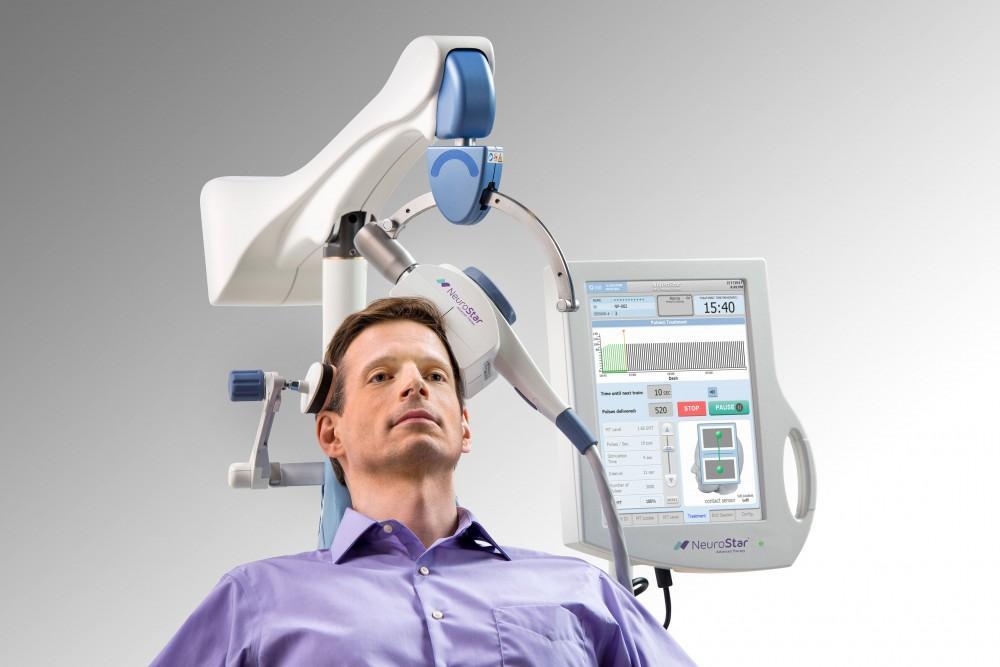Anxiety disorders affect millions of people worldwide, often leading to significant distress and impairments in daily functioning. While traditional treatments such as medication and therapy are effective for many, they do not work for everyone. An emerging alternative treatment is Transcranial Magnetic Stimulation (TMS), a non-invasive procedure that uses magnetic fields to stimulate nerve cells in the brain. This article provides an overview of TMS for anxiety, including its mechanism, benefits, and considerations.
What Is Transcranial Magnetic Stimulation (TMS)?
Transcranial Magnetic Stimulation (TMS) is a non-invasive neuromodulation technique designed to alter brain activity. It involves placing an electromagnetic coil against the scalp, which generates magnetic pulses. These pulses create electrical currents that stimulate nerve cells in targeted brain areas. TMS is primarily used to treat depression, but research into its efficacy for anxiety disorders is growing.
How TMS Works for Anxiety
TMS targets specific regions of the brain associated with anxiety. The magnetic pulses are used to modulate activity in areas such as the prefrontal cortex, which is involved in regulating mood and emotional responses. By stimulating these areas, TMS aims to balance neural activity, reduce anxiety symptoms, and improve overall functioning.
Benefits of TMS for Anxiety
- Non-Invasive and Non-Systemic: TMS does not require surgery or medication, making it a non-invasive option. It does not affect other organs or systems in the body, reducing the risk of systemic side effects.
- Minimal Side Effects: Common side effects are generally mild and may include scalp discomfort or headaches. Serious side effects are rare, making TMS a relatively safe treatment option.
- Effective for Treatment-Resistant Anxiety: TMS can be particularly beneficial for individuals who have not responded well to traditional treatments such as medications or psychotherapy.
- No Need for Anesthesia: TMS sessions are performed while the patient is awake and alert, eliminating the need for anesthesia or sedation.
- Short Treatment Sessions: Each TMS session typically lasts about 30 to 60 minutes, and many patients can resume their daily activities immediately afterward.
Considerations and Potential Drawbacks
- Multiple Sessions Required: TMS treatment usually involves a series of sessions over several weeks. The exact number of sessions can vary based on individual needs and response to treatment.
- Varied Response: Not all individuals with anxiety will respond to TMS, and its effectiveness can vary. Some may experience significant improvement, while others may see minimal or no benefit.
- Cost and Accessibility: TMS can be expensive, and insurance coverage varies. Accessibility to treatment centers offering TMS may also be limited in some regions.
- Not Suitable for Everyone: TMS may not be recommended for individuals with certain medical conditions, such as metal implants in the head or a history of seizures. A thorough evaluation by a healthcare provider is necessary to determine suitability.
What to Expect During a TMS Session
During a TMS session, patients typically sit in a comfortable chair while the electromagnetic coil is placed on their scalp. The coil is positioned based on the specific brain regions being targeted. Patients may feel a tapping or tingling sensation as the magnetic pulses are delivered. Each session lasts between 30 to 60 minutes, and patients are usually able to return to their daily activities immediately afterward.
Conclusion
Transcranial Magnetic Stimulation (TMS) represents a promising treatment option for individuals with anxiety, especially those who have not found relief through conventional methods. Its non-invasive nature, minimal side effects, and potential for improving symptoms make it an attractive alternative. However, it is important to consult with a healthcare provider to determine if TMS is appropriate for your specific condition and to discuss the potential benefits and limitations.
As research continues to advance, TMS may become an increasingly important tool in the management of anxiety disorders, offering hope and relief to those who need it.



